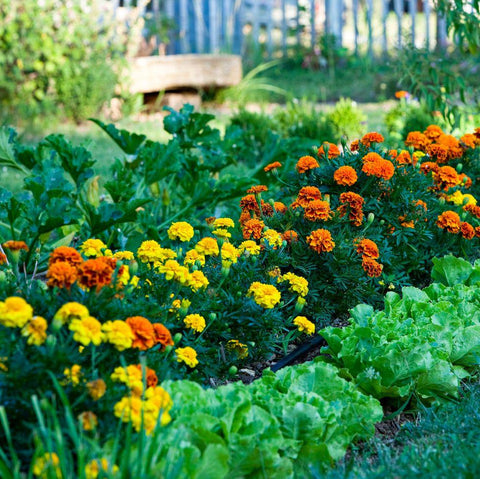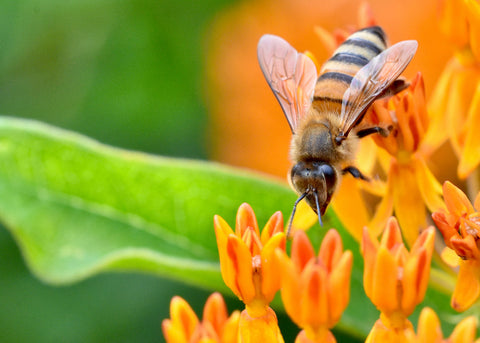Gardening is a timeless art, a harmonious dance with nature that allows us to create beauty, serenity, and life within our surroundings. If you're passionate about gardening, you've likely explored various methods to cultivate your blooms. One such method that's gaining popularity is flower gardening in raised beds. These elevated spaces not only add an element of design and accessibility to your garden but also provide an ideal environment for a stunning floral display. In this comprehensive guide, we will delve into the world of flower gardening in raised beds, exploring its benefits, techniques, and some of the most enchanting flowers to consider for your elevated garden. The following content also has some reference value for raised garden beds.

The Charm of Raised Beds for Flowers
Raised beds have become a popular choice among gardeners for several compelling reasons:
1. Enhanced Drainage
Raised beds typically offer superior drainage compared to traditional in-ground gardens. The elevated structure allows excess water to flow away more easily, preventing waterlogged soil that can harm your plants' roots.
2. Better Soil Control
With raised beds, you have greater control over your soil composition. You can customize the soil mixture to suit the specific needs of your flowers, ensuring optimal nutrition and pH levels.
3. Improved Accessibility
Raised beds are higher off the ground, reducing the need for bending or kneeling while tending to your flowers. This accessibility is a boon for gardeners with mobility issues.
4. Pest Management
Elevated beds can be easier to protect from certain garden pests, such as ground-dwelling insects. Installing barriers like hardware cloth at the bed's base can deter these pests from reaching your precious blooms.
5. Aesthetic Appeal
The raised structure of these beds adds depth and dimension to your garden, creating a visually appealing landscape. You can design and arrange your raised beds to create captivating patterns and focal points.
Choosing the Right Location for Your Raised Flower Beds
Before you embark on your journey of floral beauty in raised beds, consider the following factors when choosing the location:
1. Sunlight
Most flowering plants thrive in full sun, which typically means at least 6 to 8 hours of direct sunlight per day. Observe your garden's sun patterns and select a location that provides the required amount of sunlight for your chosen flowers.
2. Soil Quality
The existing soil quality matters even in raised beds. Test the soil to determine its pH and nutrient levels. This information will guide you in preparing the right soil mixture for your flowers.
3. Accessibility
Ensure your raised flower beds are easily accessible. You'll want to reach them comfortably for planting, watering, weeding, and deadheading. Consider pathways and proximity to water sources.
Design Considerations for Raised Bed Flower Gardening
Now that you understand the advantages of raised beds, let's explore some design considerations to make the most of your flower garden:
1. Bed Size and Shape
Choose the size and shape of your raised beds carefully. Rectangular or square beds are common choices but don't hesitate to get creative with shapes to suit your garden's aesthetics. Ensure the bed's width allows you to comfortably reach the center without stepping on the soil.

2. Bed Height
Raised beds can vary in height. Taller beds can be easier to work with, especially if you have mobility limitations. However, consider the specific needs of the flowers you intend to plant, as some may require deeper soil.
3. Material Selection
Select high-quality materials for your raised beds. Wood, such as cedar or redwood, is a popular choice due to its natural aesthetics. You can also opt for composite materials or galvanized steel if you prefer a modern look and durability.
4. Soil Mix
Invest in good-quality soil for your raised beds. A mix of garden soil, compost, and organic matter is an excellent choice. Ensure the soil is well-draining and well-aerated to provide optimal growing conditions for your flowers.
5. Sunlight
Consider the sunlight requirements of the flowers you plan to grow. Place your raised beds in a location that receives the appropriate amount of sunlight for your chosen blooms. Some flowers thrive in full sun, while others prefer partial or full shade.
6. Irrigation
Plan for irrigation to ensure your flowers receive consistent moisture. Drip irrigation or soaker hoses work well in raised beds. Remember to water deeply and adjust the frequency based on weather conditions.
Selecting Flowers for Your Raised Beds
Now comes the exciting part: choosing the flowers that will grace your raised beds with their beauty and fragrance. Here are some stunning options to consider:
1. Roses
Roses are the epitome of elegance and romance. Their lush blooms, available in various colors and fragrances, make them a classic choice for raised beds. Opt for compact or climbing varieties depending on your bed's design.
2. Peonies
Peonies are adored for their huge, ruffled blooms and alluring fragrance. They come in a range of colors and can add a touch of vintage charm to your raised beds.
3. Tulips
Tulips are a symbol of spring's arrival, offering a burst of vibrant colors after a long winter. Plant different tulip varieties to create a stunning display of varying heights and hues.
4. Irises
Irises are known for their intricate and striking blooms. They come in a spectrum of colors, and their sword-like leaves add a unique texture to your raised beds.
5. Dahlias
Dahlias are a favorite for their intricate, multi-layered blooms and wide range of colors. They thrive in well-draining soil and can become the stars of your raised bed.
6. Lavender
Lavender not only adds beauty with its fragrant spikes of purple flowers but also attracts pollinators like bees and butterflies. It's a delightful addition to raised beds.
7. Marigolds
Marigolds are known for their cheerful, golden blooms. They're easy to grow and provide natural pest control by deterring many garden insects.

Planting and Caring for Your Flowers
Now that you've chosen your flowers, it's time to plant and care for them:
1. Planting
- Follow the specific planting instructions for each flower type, including spacing and depth.
- Group flowers with similar water and sunlight requirements together within your raised beds.
- Consider companion planting to maximize the health and beauty of your flower beds. For instance, growing marigolds alongside tomatoes can keep certain pests away.
2. Watering
- Water your flowers consistently, keeping the soil evenly moist but not waterlogged. Use mulch to help retain moisture.
- Adjust your watering schedule based on the weather and the specific needs of your flower varieties.
3. Pruning and Deadheading
- Deadhead flowers on a regular basis to encourage continuous flowering and prevent the production of seeds.
- Prune your flowers as needed to maintain their shape and size.
4. Fertilizing
- Feed your flowers with a balanced, water-soluble fertilizer according to the recommendations for each plant type.
- Consider adding organic matter to your raised beds annually to replenish nutrients.
Conclusion: A Blooming Masterpiece
Flower gardening in raised beds is a delightful journey of creativity, color, and fragrance. By selecting the right flowers, carefully designing your raised beds, and nurturing your blooms with care, you can create a garden masterpiece that elevates your outdoor space and brings joy to your heart. So, roll up your sleeves, dig into the soil, and watch your raised beds transform into a symphony of floral beauty that enchants all who behold it.









